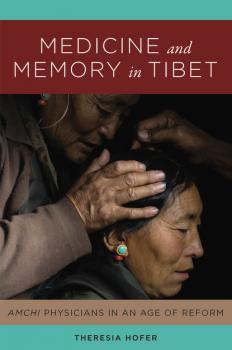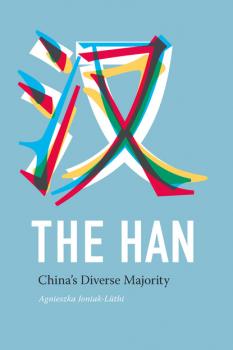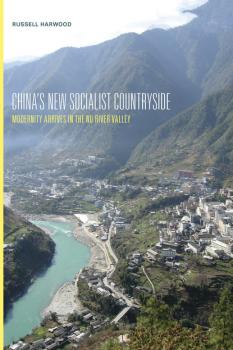ТОП просматриваемых книг сайта:















Studies on Ethnic Groups in China
Скачать книги из серии Studies on Ethnic Groups in ChinaАннотация
The Nuosu people, who were once overlords of vast tracts of farmland and forest in the uplands of southern Sichuan and neighboring provinces, are the largest division of the Yi ethnic group in southwest China. Their creation epic plots the origins of the cosmos, the sky and earth, and the living beings of land and water. This translation is a rare example in English of Indigenous ethnic literature from China.Transmitted in oral and written forms for centuries among the Nuosu, The Book of Origins is performed by bimo priests and other tradition-bearers. Poetic in form, the narrative provides insights into how a clan- and caste-based society organizes itself, dictates ethics, relates to other ethnic groups, and adapts to a harsh environment. A comprehensive introduction to the translation describes the land and people, summarizes the work’s themes, and discusses the significance of The Book of Origins for the understanding of folk epics, ethnoecology, and ethnic relations.
Аннотация
Only fifty years ago, Tibetan medicine, now seen in China as a vibrant aspect of Tibetan culture, was considered a feudal vestige to be eliminated through government-led social transformation. Medicine and Memory in Tibet examines medical revivalism on the geographic and sociopolitical margins both of China and of Tibet�s medical establishment in Lhasa, exploring the work of medical practitioners, or amchi, and of Medical Houses in the west-central region of Tsang.Due to difficult research access and the power of state institutions in the writing of history, the perspectives of more marginal amchi have been absent from most accounts of Tibetan medicine. Theresia Hofer breaks new ground both theoretically and ethnographically, in ways that would be impossible in today�s more restrictive political climate that severely limits access for researchers. She illuminates how medical practitioners safeguarded their professional heritage through great adversity and personal hardship.
Информация о книге
Автор произведения Theresia Hofer
Аннотация
This narrative of subsistence on the Tibetan plateau describes the life-worlds of people in a region traditionally known as Kham who move with their yaks from pasture to pasture, depending on the milk production of their herd for sustenance. Gillian Tan�s story, based on her own experience of living through seasonal cycles with the people of Dora Karmo between 2006 and 2013, examines the community�s powerful relationship with a Buddhist lama and their interactions with external agents of change. In showing how they perceive their environment and dwell in their world, Tan conveys a spare beauty that honors the stillness and rhythms of nomadic life.
Информация о книге
Автор произведения Gillian G. Tan
Аннотация
Xinjiang and the Modern Chinese State views modern Chinese political history from the perspective of Han officials who were tasked with governing Xinjiang. This region, inhabited by Uighurs, Kazaks, Hui, Mongols, Kirgiz, and Tajiks, is also the last significant “colony” of the former Qing empire to remain under continuous Chinese rule throughout the twentieth century. By foregrounding the responses of Chinese and other imperial elites to the growing threat of national determination across Eurasia, Justin Jacobs argues for a reconceptualization of the modern Chinese state as a “national empire.” He shows how strategies for administering this region in the late Qing, Republican, and Communist eras were molded by, and shaped in response to, the rival platforms of ethnic difference characterized by Soviet and other geopolitical competitors across Inner and East Asia.This riveting narrative tracks Xinjiang political history through the Bolshevik revolution, the warlord years, Chinese civil war, and the large-scale Han immigration in the People’s Republic of China, as well as the efforts of the exiled Xinjiang government in Taiwan after 1949 to claim the loyalty of Xinjiang refugees.
Информация о книге
Автор произведения Justin M. Jacobs
Аннотация
This ethnography explores contemporary narratives of “Han-ness,” revealing the nuances of what Han identity means today in relation to that of the fifty-five officially recognized minority ethnic groups in China, as well as in relation to home place identities and the country’s national identity. Based on research she conducted among native and migrant Han in Shanghai and Beijing, Aqsu (in Xinjiang), and the Sichuan-Yunnan border area, Agnieszka Joniak-Luthi uncovers and discusses these identity topographies. Bringing into focus the Han majority, which has long acted as an unexamined backdrop to ethnic minorities, Joniak-Luthi contributes to the emerging field of critical Han studies as she considers how the Han describe themselves – particularly what unites and divides them – as well as the functions of Han identity and the processes through which it is maintained and reproduced. The Han wil l appeal to scholars and students of contemporary China, anthropology, and ethnic and cultural studies.
Информация о книге
Автор произведения Agnieszka Joniak-Luthi
Аннотация
In 2001 the Chinese government announced that the precise location of Shangrila�a place that previously had existed only in fiction�had been identified in Zhongdian County, Yunnan. Since then, Sino-Tibetan borderlands in Yunnan, Sichuan, Gansu, Qinghai, and the Tibet Autonomous Region have been the sites of numerous state projects of tourism development and nature conservation, which have in turn attracted throngs of backpackers, environmentalists, and entrepreneurs who seek to experience, protect, and profit from the region�s landscapes.Mapping Shangrila advances a view of landscapes as media of governance, representation, and resistance, examining how they are reshaping cultural economies, political ecologies of resource use, subjectivities, and interethnic relations. Chapters illuminate topics such as the role of Han and Tibetan literary representations of border landscapes in the formation of ethnic identities; the remaking of Chinese national geographic imaginaries through tourism in the Yading Nature Reserve; the role of The Nature Conservancy and other transnational environmental organizations in struggles over culture and environmental governance; the way in which matsutake mushroom and caterpillar fungus commodity chains are reshaping montane landscapes; and contestations over the changing roles of mountain deities and their mediums as both interact with increasingly intensive nature conservation and state-sponsored capitalism.
Аннотация
While the number of domestic leisure travelers has increased dramatically in reform-era China, the persistent gap between urban and rural living standards attests to ongoing social, economic, and political inequalities. The state has widely touted tourism for its potential to bring wealth and modernity to rural ethnic minority communities, but the policies underlying the development of tourism obscure some complicated realities. In tourism, after all, one person’s leisure is another person’s labor. A Landscape of Travel investigates the contested meanings and unintended consequences of tourism for those people whose lives and livelihoods are most at stake in China’s rural ethnic tourism industry: the residents of village destinations. Drawing on ethnographic research conducted in Ping’an (a Zhuang village in Guangxi) and Upper Jidao (a Miao village in Guizhou), Jenny Chio analyzes the myriad challenges and possibilities confronted by villagers who are called upon to do the work of tourism. She addresses the shifting significance of migration and rural mobility, the visual politics of tourist photography, and the effects of touristic desires for “exotic difference” on village social relations. In this way, Chio illuminates the contemporary regimes of labor and leisure and the changing imagination of what it means to be rural, ethnic, and modern in China today.More about the author: http://www.jennychio.com/
Аннотация
The story underlying this ethnography began with the recent discovery and commercialization of the remnant of an ancient �queendom� on the Sichuan-Tibet border. Recorded in classical Chinese texts, this legendary matriarchal domain has attracted not only tourists but the vigilance of the Chinese state. Tenzin Jinba�s research examines the consequences of development of the queendom label for local ethnic, gender, and political identities and for state-society relations.
Информация о книге
Автор произведения Tenzin Jinba
Аннотация
This historical investigation describes the Qing imperial authorities� attempts to consolidate control over the Zhongjia, a non-Han population, in eighteenth-century Guizhou, a poor, remote, and environmentally harsh province in Southwest China. Far from submitting peaceably to the state�s quest for hegemony, the locals clung steadfastly to livelihood choices�chiefly illegal activities such as robbery, raiding, and banditry�that had played an integral role in their cultural and economic survival. Using archival materials, indigenous folk narratives, and ethnographic research, Jodi Weinstein shows how these seemingly subordinate populations challenged state power.
Информация о книге
Автор произведения Jodi L. Weinstein
Аннотация
Based on ethnographic fieldwork, this case study examines the impact of economic development on ethnic minority people living along the upper-middle reaches of the Nu (Salween) River in Yunnan. In this highly mountainous, sparsely populated area live the Lisu, Nu, and Dulong (Drung) people, who until recently lived as subsistence farmers, relying on shifting cultivation, hunting, the collection of medicinal plants from surrounding forests, and small-scale logging to sustain their household economies. China's New Socialist Countryside explores how compulsory education, conservation programs, migration for work, and the expansion of social and economic infrastructure are not only transforming livelihoods, but also intensifying the Chinese Party-state’s capacity to integrate ethnic minorities into its political fabric and the national industrial economy.










